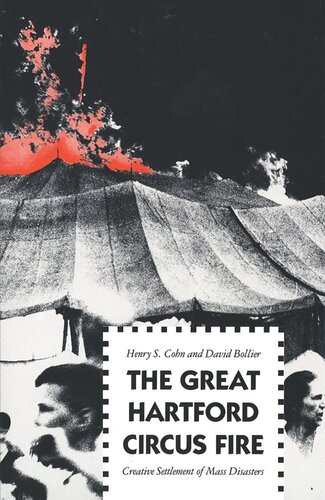

Most ebook files are in PDF format, so you can easily read them using various software such as Foxit Reader or directly on the Google Chrome browser.
Some ebook files are released by publishers in other formats such as .awz, .mobi, .epub, .fb2, etc. You may need to install specific software to read these formats on mobile/PC, such as Calibre.
Please read the tutorial at this link: https://ebookbell.com/faq
We offer FREE conversion to the popular formats you request; however, this may take some time. Therefore, right after payment, please email us, and we will try to provide the service as quickly as possible.
For some exceptional file formats or broken links (if any), please refrain from opening any disputes. Instead, email us first, and we will try to assist within a maximum of 6 hours.
EbookBell Team

4.7
66 reviewsOn July 6, 1944, the Big Top suddenly caught fire at a Ringling Bros. and Barnum & Bailey circus performance in Hartford, Connecticut. The inferno killed 169 people, mostly women and children, and injured more than 550 others. Faced with hundreds of liability suits, the Greatest Show on Earth headed for bankruptcy and liquidation, and tort claimants were likely to receive northing. The dismal scenario was averted only when a small group of public-spirited Hartford attorneys fashioned a creative successful solution to one of the nation’s earliest mass torts. This nearly forgotten episode offers some valuable lessons for us today when litigation involving asbestos, the Dalkon Shield and other mass torts is yielding a dubious brand of justice for all.
In this book Henry S. Cohn and David Bollier tell the story of the catastrophic circus fire and its remarkable legal aftermath. They describe how, with little guidance from existing case law and many quarrels and uncertainties, three enterprising lawyers secured a court-supervised receivership that kept the circus in business, enabling it to generate profits that could pay off the claims brought against it. A novel arbitration plan then resolved the claims and avoided the expense, delays, and uncertainties of conventional litigation. The authors argue that this innovative solution—the first modern example of alternative dispute resolution of a mass tort—could, with adaptations, be successfully applied to other mass torts today. Creative settlement techniques could improve our court system while dispensing an equivalent or superior form of justice.